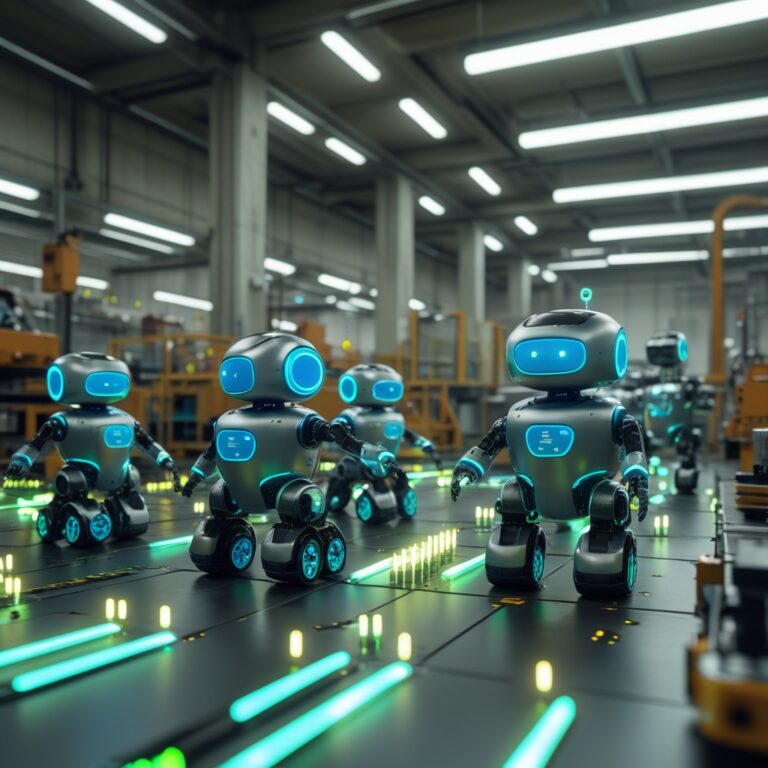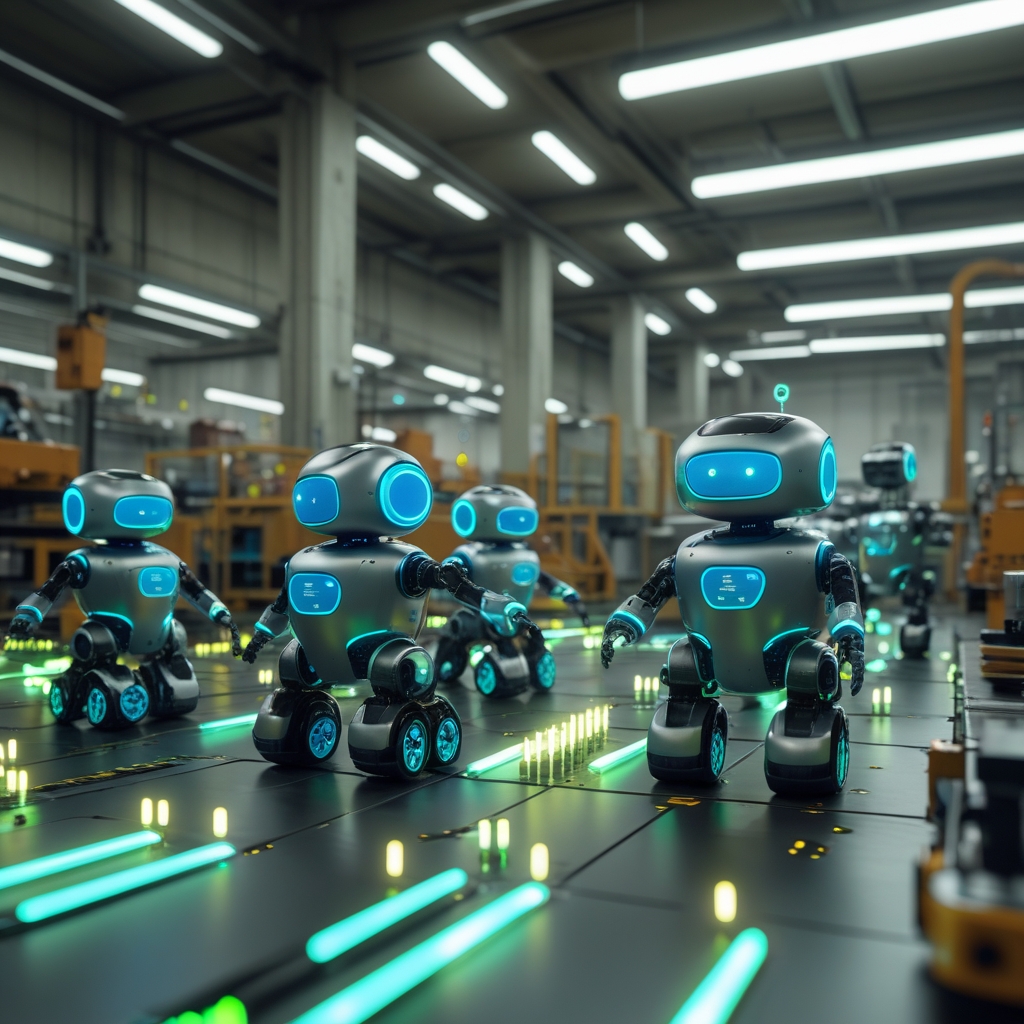How to Build a Swarm Robotics System
How to build a swarm robotics system is an exciting journey into the future of intelligent machines. Swarm robotics is inspired by nature—like how ants, bees, or birds coordinate in groups to achieve complex goals. Similarly, in swarm robotics, multiple small robots collaborate, communicate, and make decisions collectively without relying on a central controller. This decentralized approach creates systems that are flexible, efficient, and resilient. In this guide, we’ll explore what swarm robotics is, how it works, and the essential steps to design and build a functional swarm robotics system that mirrors the intelligence of nature.
Understanding Swarm Robotics
Swarm robotics is a branch of robotics and artificial intelligence that focuses on building multi-robot systems capable of working together to perform coordinated tasks. The concept draws inspiration from biological swarms—such as fish schools or ant colonies—where individuals follow simple rules, yet the collective behavior results in complex outcomes.
In a swarm robotics system, each robot operates autonomously but communicates locally with other robots in the network. This coordination allows the swarm to adapt to changing environments and accomplish tasks like search and rescue, environmental monitoring, and agricultural automation more effectively than a single robot could.
Why Swarm Robotics Matters
Building a swarm robotics system is not just about innovation—it’s about creating machines that can solve real-world challenges. Swarm robotics brings scalability, flexibility, and robustness to automation. Unlike traditional robotic systems, which may fail if one component malfunctions, swarm systems continue functioning even if some robots are lost.
Industries ranging from logistics and agriculture to defense and space exploration are adopting swarm robotics to improve efficiency and safety. By distributing intelligence across many small robots, these systems reduce dependency on central control, minimize errors, and optimize performance through collective intelligence.
Key Components of a Swarm Robotics System
To understand how to build a swarm robotics system, it’s essential to know the main components that form its foundation:
-
Robotic Units: Small, mobile robots equipped with sensors, processors, and actuators.
-
Communication Network: Allows robots to share data and coordinate actions in real time.
-
Sensors and Perception Systems: Enable robots to detect obstacles, measure distances, and identify targets.
-
Control Algorithms: Define how robots interact and respond to local and global information.
-
Power Systems: Provide energy for movement, sensing, and communication.
Each component plays a vital role in ensuring that the swarm behaves cohesively, even without a central authority.
Steps to Build a Swarm Robotics System
Now let’s explore the step-by-step process of building a swarm robotics system that can operate efficiently and intelligently.
Define the Objective
Start by determining the goal of your swarm—such as area mapping, environmental monitoring, or warehouse automation. Clear objectives guide your system design and control logic.
Design Individual Robots
Each robot in the swarm should be compact, affordable, and capable of sensing and movement. Common hardware includes microcontrollers, ultrasonic sensors, and wireless modules like Wi-Fi or Bluetooth.
Establish Communication Protocols
A strong communication network is the backbone of swarm robotics. Use decentralized protocols like peer-to-peer mesh communication to allow real-time coordination among robots.
Develop the Control Algorithm
Control algorithms define how robots interact with their environment and each other. Approaches such as behavior-based algorithms, flocking algorithms, and particle swarm optimization (PSO) are widely used.
Simulate and Test
Before physical deployment, simulate your swarm in virtual environments using tools like Webots, Gazebo, or ROS (Robot Operating System). Testing helps fine-tune behavior and identify design flaws.
Build and Deploy the Swarm
Assemble your physical robots and load the software. Deploy them in controlled environments first to test navigation, communication, and coordination. Gradually scale up the number of robots to form a functioning swarm.
Benefits of Swarm Robotics
Implementing a swarm robotics system offers several benefits that make it a game changer for modern automation:
-
Scalability: Adding more robots increases system capacity without major redesigns.
-
Resilience: The system continues functioning even if individual robots fail.
-
Flexibility: Swarms adapt to changing conditions and tasks.
-
Cost Efficiency: Using many small, inexpensive robots can be more economical than deploying a single complex machine.
-
Parallel Operation: Multiple robots can work simultaneously, increasing speed and coverage.
These advantages make swarm robotics ideal for environments where adaptability and robustness are key.
Challenges in Building Swarm Robotics Systems
Despite its potential, building swarm robotics systems comes with technical challenges. Communication reliability, energy management, and algorithm complexity can affect system performance.
Maintaining synchronization among robots and avoiding interference are also major concerns. Furthermore, developing algorithms that ensure global coordination using only local interactions remains a complex research area.
To overcome these challenges, developers use machine learning, reinforcement learning, and bio-inspired algorithms to optimize swarm behavior dynamically. Continuous testing and calibration ensure smooth operation in unpredictable real-world conditions.
Real-World Applications of Swarm Robotics
Swarm robotics is transforming multiple industries through intelligent, cooperative automation:
-
Disaster Response: Swarms can search for survivors in debris or inaccessible zones.
-
Agriculture: Drones and ground robots work together for crop monitoring and pest control.
-
Warehouse Logistics: Small autonomous robots handle sorting, packing, and transport.
-
Environmental Monitoring: Swarms track pollution levels or study wildlife habitats.
-
Military and Space Exploration: Used for reconnaissance, mapping, and planetary exploration missions.
These applications show how swarm robotics systems enhance efficiency, safety, and innovation across fields.
Best Practices for Building Swarm Systems
To ensure success when building a swarm robotics system, follow these best practices:
-
Start Small: Begin with a small number of robots before scaling up.
-
Focus on Communication: Reliable data sharing is key to swarm coordination.
-
Use Modular Designs: Modular hardware and software make upgrades easier.
-
Incorporate AI: Integrate machine learning for adaptive swarm behavior.
-
Test Continuously: Simulate and field-test regularly to ensure robustness.
Following these principles helps create efficient, scalable, and future-ready swarm systems.
The Future of Swarm Robotics
The future of swarm robotics lies in combining AI, 5G, and edge computing to create fully autonomous systems that think, learn, and adapt in real time. As technology evolves, swarm robots will become essential in smart cities, agriculture, defense, and healthcare.
Advancements in neural network-based control and blockchain for swarm coordination are paving the way for more secure, transparent, and intelligent multi-robot collaboration. The next decade will likely see swarm robotics becoming as commonplace as drones or autonomous vehicles are today.
Final Thoughts
Understanding how to build a swarm robotics system is the first step toward unlocking the future of intelligent automation. By designing cooperative, adaptable robots inspired by nature, engineers can create systems that perform complex tasks more efficiently and sustainably.
Whether you’re developing robots for environmental research, industry automation, or academic study, swarm robotics opens the door to scalable, robust, and self-organizing solutions. This field represents not just the next phase of robotics but a blueprint for how machines can work together—just like nature intended.















